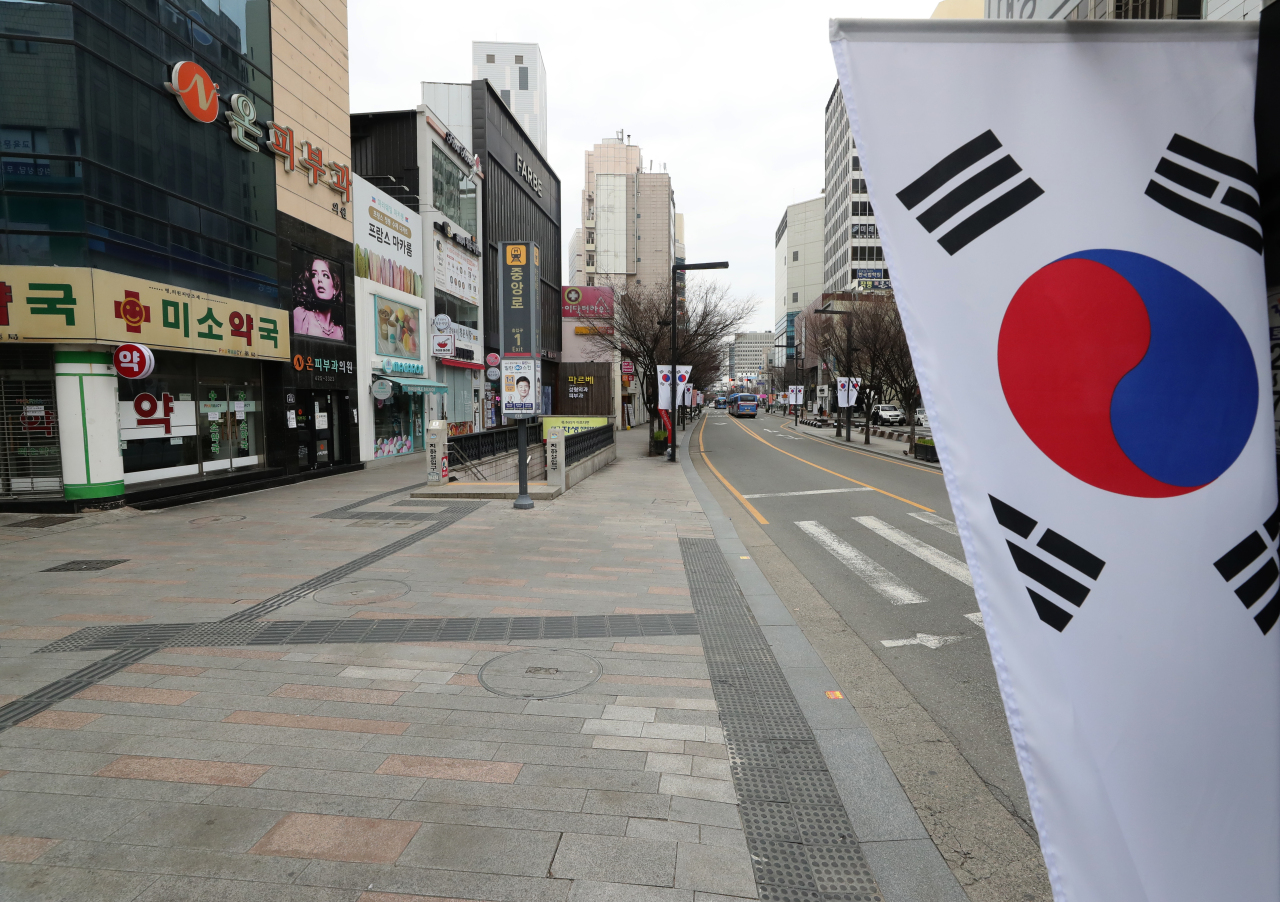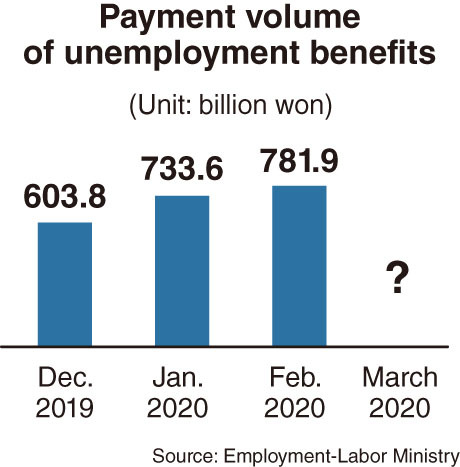 |
The streets of downtown Daegu are unusually quiet on March 1 amid the COVID-19 pandemic. The city had reported the highest number of novel coronavirus infections among the 17 major administrative areas in Korea as of March 28. (Yonhap) |
SEJONG -- Government payouts for the jobless are estimated to have shot up to a historic high in March in the wake of COVID-19. The Ministry of Employment and Labor is set to make the figure public in about two weeks.
A surge in the number of unemployment benefits claimants is projected for sectors including tourism, airlines, restaurants, lodging, private educational institutes and many other retail services.
Among the eight major cities and nine provinces in South Korea, Daegu and North Gyeongsang Province -- the two areas hardest-hit by the outbreak -- are likely to post significant growth both in the number of recipients and the volume of payouts.
Since the first case of COVID-19 was reported in the nation on Jan. 20, Daegu (where 6,587 people have been infected) and contiguous North Gyeongsang Province (with 1,285 infected) collectively accounted for 83 percent (7,872) of the 9,478 cases reported nationwide as of March 28.
Unemployment benefits payouts saw rapid on-month growth in February, when assistance for the jobless reached an all-time high of 781.9 billion won ($640.9 million), up 32 percent from February 2019.
Further, the number of first-time claimants increased by 33.8 percent (27,000 individuals) to 107,000 in February, compared with a year earlier. The total number of recipients came to 536,000, up 16.3 percent from a year earlier.
 |
(Graphic by Kim Sun-young/The Korea Herald) |
The situation is aggravating concerns over the government’s capacity to continue paying benefits at such high levels. Payouts had already seen a sharp increase even before the pandemic started; in the aftermath of increases in the minimum wage and the economic slowdown, microenterprises closed en masse between 2018 and 2019.
Data from the Korea Employment Information Service showed that unemployment benefits have continued to increase sharply on-year over the past three years -- from 5 trillion won in 2017 to 6.43 trillion won in 2018, and to an all-time high of 8.07 trillion won in 2019.
The 2019 figure marked a 72.8 percent (or 3.4 trillion won) surge compared with 2016 under the previous administration, when it was 4.67 trillion won.
Further, compared with five years earlier, in 2014, when benefits paid out amounted to 3.96 trillion won, the 2019 levels constituted a 103.7 percent increase.
The spike in payments could suggest a dire situation in the hiring market under the Moon Jae-in administration.
A research analyst in Seoul said, “Though there were some people who exploited the state-led payout system via shady securing of beneficiary eligibility, data indicated that a growing number of people have been forced to leave their workplaces amid the economic slowdown.”
More recently, the KEIS data showed that the number of recipients has surged among Korean business owners providing services such as food, lodging and tourism.
A year earlier, in December 2018, only 642 food retailers were paid unemployment benefits. But the number of recipients climbed rapidly in 2019 -- to 5,272 in July, 6,032 in August, 6,653 in September, 7,656 in October, 8,546 in November and 9,785 in December.
The figure for lodging and tourism shot up to 2,234 in December 2019, compared with only 131 people a year earlier.
KEIS explains that there could be differences in figures between net recipients and redundancy-included recipients. Nonetheless, it is evident that the small-restaurant and lodging-tourism sectors represented a sharp contrast from other major sectors.
The rapid growth in the number of recipients in the food and lodging sectors demonstrates that self-employed people faced greater difficulty due to drastic hikes in the minimum wage over the past two years, market insiders said.
For full-time salaried workers, the minimum wage climbed from 1.35 million won a month in 2017 to 1.79 million won in 2020, affected by a 32.7 percent hike over the past three years.
By Kim Yon-se (
kys@heraldcorp.com)





![[Herald Interview] 'Trump will use tariffs as first line of defense for American manufacturing'](http://res.heraldm.com/phpwas/restmb_idxmake.php?idx=644&simg=/content/image/2024/11/26/20241126050017_0.jpg)

![[Health and care] Getting cancer young: Why cancer isn’t just an older person’s battle](http://res.heraldm.com/phpwas/restmb_idxmake.php?idx=644&simg=/content/image/2024/11/26/20241126050043_0.jpg)

